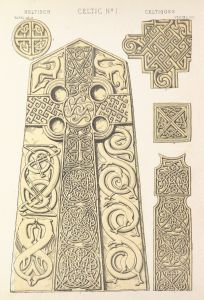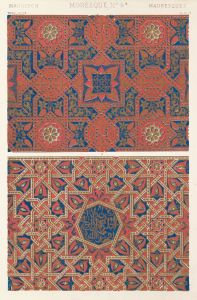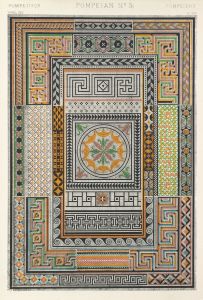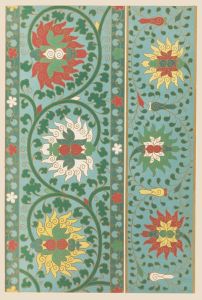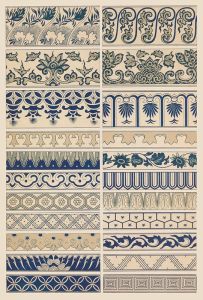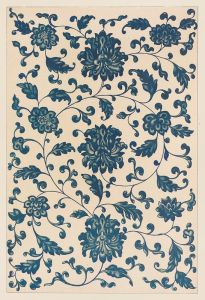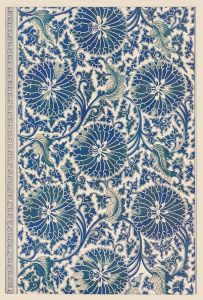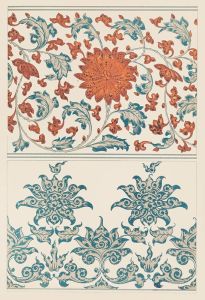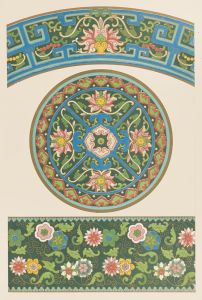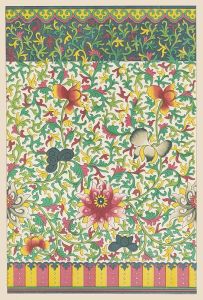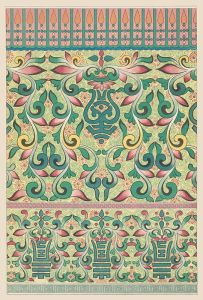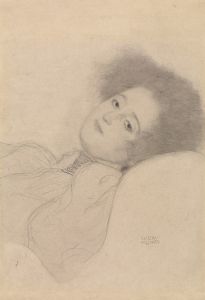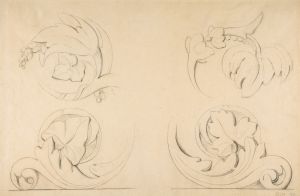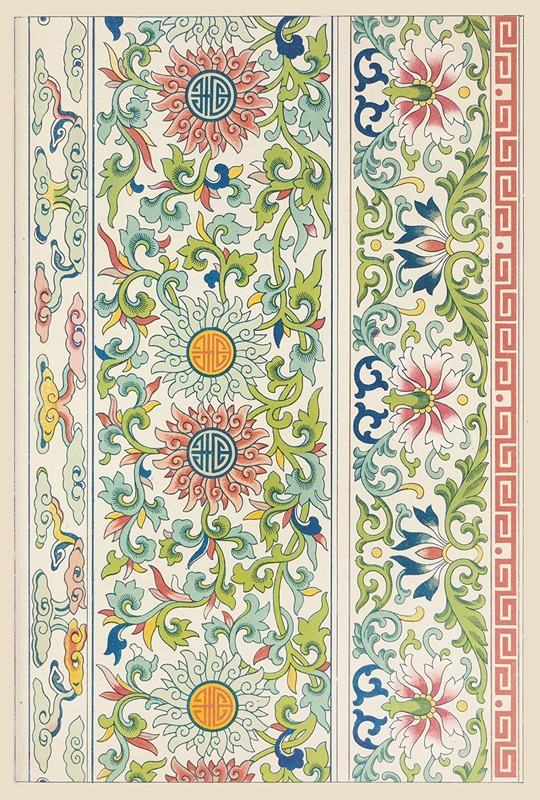
Examples of Chinese ornament, Pl.63
A hand-painted replica of Owen Jones’s masterpiece Examples of Chinese ornament, Pl.63, meticulously crafted by professional artists to capture the true essence of the original. Each piece is created with museum-quality canvas and rare mineral pigments, carefully painted by experienced artists with delicate brushstrokes and rich, layered colors to perfectly recreate the texture of the original artwork. Unlike machine-printed reproductions, this hand-painted version brings the painting to life, infused with the artist’s emotions and skill in every stroke. Whether for personal collection or home decoration, it instantly elevates the artistic atmosphere of any space.
"Examples of Chinese Ornament, Pl.63" is a plate from the influential design book "The Grammar of Ornament," authored by Owen Jones and first published in 1856. Owen Jones was a British architect and designer known for his work in color theory, ornamentation, and his role in the design of the Crystal Palace for the Great Exhibition of 1851. His book, "The Grammar of Ornament," is a comprehensive collection of design patterns and motifs from various cultures around the world, aiming to provide inspiration and guidance for designers and architects.
Plate 63 specifically focuses on Chinese ornamentation, showcasing the intricate and symbolic designs characteristic of Chinese art. The plate is part of a broader effort by Jones to document and celebrate the diversity of global design traditions, emphasizing the importance of understanding and appreciating the aesthetic principles of different cultures. In his work, Jones sought to distill the essence of these designs, presenting them in a way that could be studied and applied by Western designers.
Chinese ornamentation, as depicted in Plate 63, is known for its use of symbolic motifs, vibrant colors, and intricate patterns. These designs often incorporate elements from nature, such as flowers, birds, and mythical creatures, reflecting the deep connection between Chinese art and the natural world. Additionally, Chinese ornaments frequently include motifs that carry specific meanings or convey cultural values, such as dragons symbolizing power and strength, or the phoenix representing rebirth and immortality.
Jones's depiction of Chinese ornamentation in "The Grammar of Ornament" is notable for its attention to detail and accuracy. He meticulously reproduced these designs, capturing the essence of Chinese aesthetics while also making them accessible to a Western audience. His work played a significant role in the 19th-century design reform movement, which sought to improve the quality of design by looking to historical and non-Western sources for inspiration.
"The Grammar of Ornament" was widely influential in its time and continues to be a valuable resource for designers and historians today. By including Chinese ornamentation alongside other global design traditions, Jones highlighted the universality of decorative art and the potential for cross-cultural exchange in the realm of design. His work encouraged a greater appreciation for the richness and diversity of world art, promoting a more inclusive understanding of beauty and creativity.
Overall, "Examples of Chinese Ornament, Pl.63" serves as a testament to Owen Jones's vision of a world where design transcends cultural boundaries, drawing from the best of each tradition to create something new and inspiring. Through his careful documentation and presentation of Chinese ornamentation, Jones not only preserved these designs for future generations but also fostered a greater appreciation for the artistry and craftsmanship inherent in Chinese decorative art.





